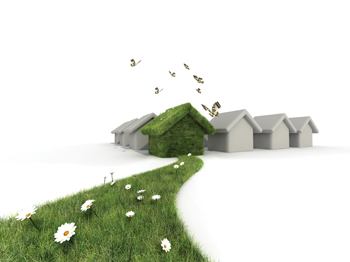Wow ‘Em With Wood
27 Mar 2012
Wood is a standard material on many homes’ exteriors, but more people are finding creative uses for wood indoors, where its versatility and organic beauty shine.
By Lisa Truesdale Want a rustic look and feel for your home? Use lots of wood. Prefer a sleeker, more contemporary look, or perhaps dramatic elegance? Use lots of wood.
- Decorative, weathered-wood beams give this room sweet rusticity. Photo courtesy of Colorado Timberframe

- Wide wooden window frames and interesting ceiling beams impart elegance to this room. Photo courtesy of Colorado Timberframe
Rustic Elegance
To achieve an ornate, elegant feel with wood, Stuntz says it’s all about “bigger”—wider door casings, taller baseboards, more layers of crown molding. “Most homebuilders use a standard 2.5- to 3-inch door casing,” Stuntz explains. “But to add a classic, elegant look, you can easily get a 5-inch detailed door casing. Likewise, most builders favor a 3.5- to 4-inch baseboard, which is rather boring. Switch to taller and wider and instantly get a solid, elegant feeling, similar to the most expensive homes out there.”
- Thick wooden beams along the ceiling, walls and fireplace of this living room add visual interest to an otherwise nondescript space.
Way to Go
Whether you want a simple, back-to-nature ambience or the look and feel of a luxury home—or anything in between—Tompkins, Laughlin and Stuntz concur wholeheartedly that wood is the way to go.
- Grouped wooden columns in this outdoor dining porch help define the space, add a little privacy and still let diners enjoy the views. Photo courtesy of Surround Architecture















